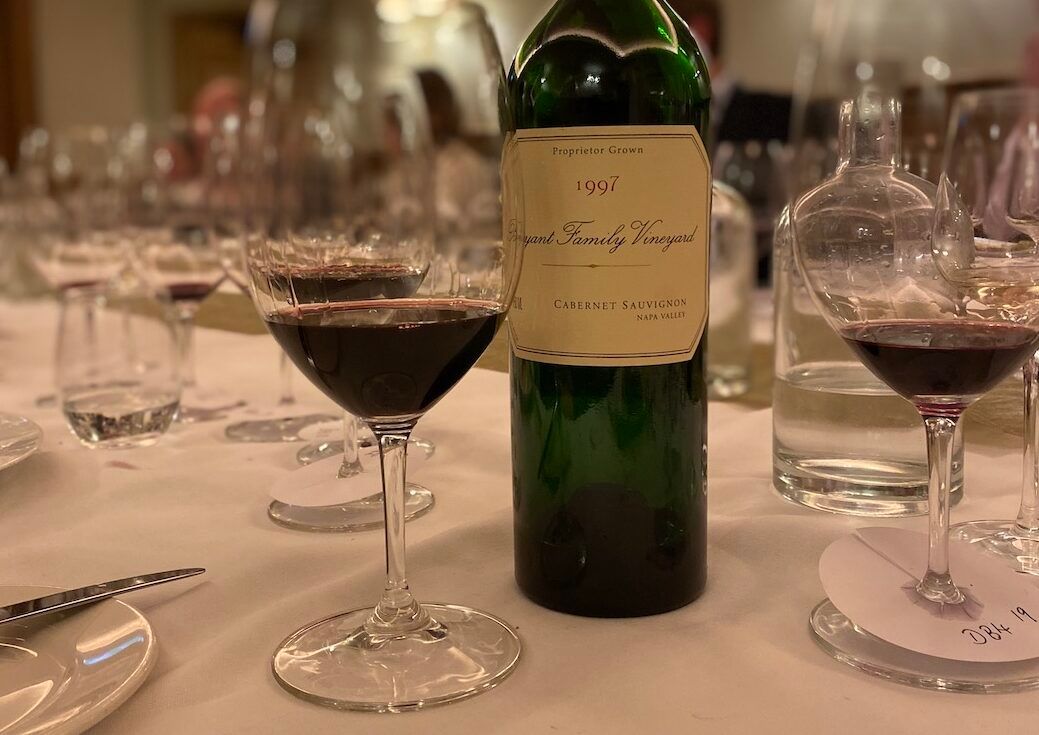“Between 1995 and 2005 the critics were dominating wine and had a huge influence on people making high octane wines, very powerful – they would make a wine for Robert Parker that was….‘mweh’.”

Quintessential Napa: Bryant Estate looking down towards Lake Hennessey
“Yeah, this is really good shit.”
Bryant Estate sales director Tony McClung, nods, standing in the private dining room of Mayfair’s Saint Jacques restaurant, at the end of a long table impressively laden down with an array of glasses generously filled with some of Napa’s most exclusive and expensive red wines.
But in this case he is not referring to the wines, he is actually referring to shit shit – the manure which the 8-strong team at Bryant purchases to enrich the six hectares of biodynamically-farmed vines on the steep volcanic and clay slopes of this northernmost property on Pritchard Hill. The premium-grade manure comes from a team of the very finest horses that are organically bred in line with the winery’s biodynamic status and an example of how every tiny detail is of the very highest significance in this premium Napa Valley site.
Bryant Estate is the quintessential boutique Napa producer – it is small, privately owned by fine art collectors, has chiefly Cabernet Sauvignon vines situated on prime steep slopes, produces tiny yields and makes some of the most sought-after wines on the planet.
The impeccably-designed website reeks of exclusivity.
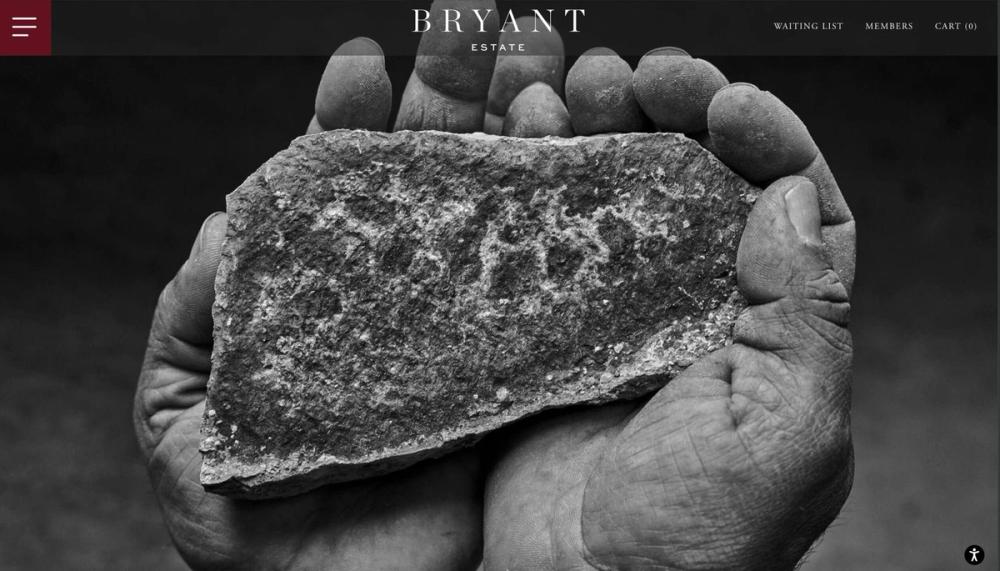
The three buttons on the home page read ‘Waiting List’, then ‘Members’, followed by ‘Cart – (0)’ a stark reminder that these wines are spectacularly hard to come by and, if you can get your hands on some, be prepared to pay a price. The 1997 vintage of Bryant Family Vineyard we taste at the end of lunch, a vintage that sealed their success with the first of four 100-Parker Point wines, will set you back a cool $3,500.
In 2019 when Bryant Estate released an experimental single cuvée of 2016 vintage Cabernet Franc (sourced from Pritchard Hill) the wine sold out in 43 minutes at $1200 a bottle – not bad business for a one-off sold in the middle of a pandemic.
Fast cult status
Founded in 1986 by businessman Donald Bryant and his ex-wife Barbara, the first vintage of the estate’s Bryant Family Vineyard Cabernet Sauvignon was released in 1992 under the direction of Helen Turley and quickly achieved cult status alongside the wines of Harlan Estate and Screaming Eagle. The second to sixth vintages achieved 97, 98, 99, 99 and 100 points from Parker – cementing their early success.
Speaking with McClung, winemaker Kathryn ‘KK’ Carothers and co-owner Bettina Bryant – Donald’s third wife and a Swiss-American ex-ballet dancer who trod the boards with Mikhail Baryshnikov – it is clear that chasing top scores and dollars is not their raison d’aitre.
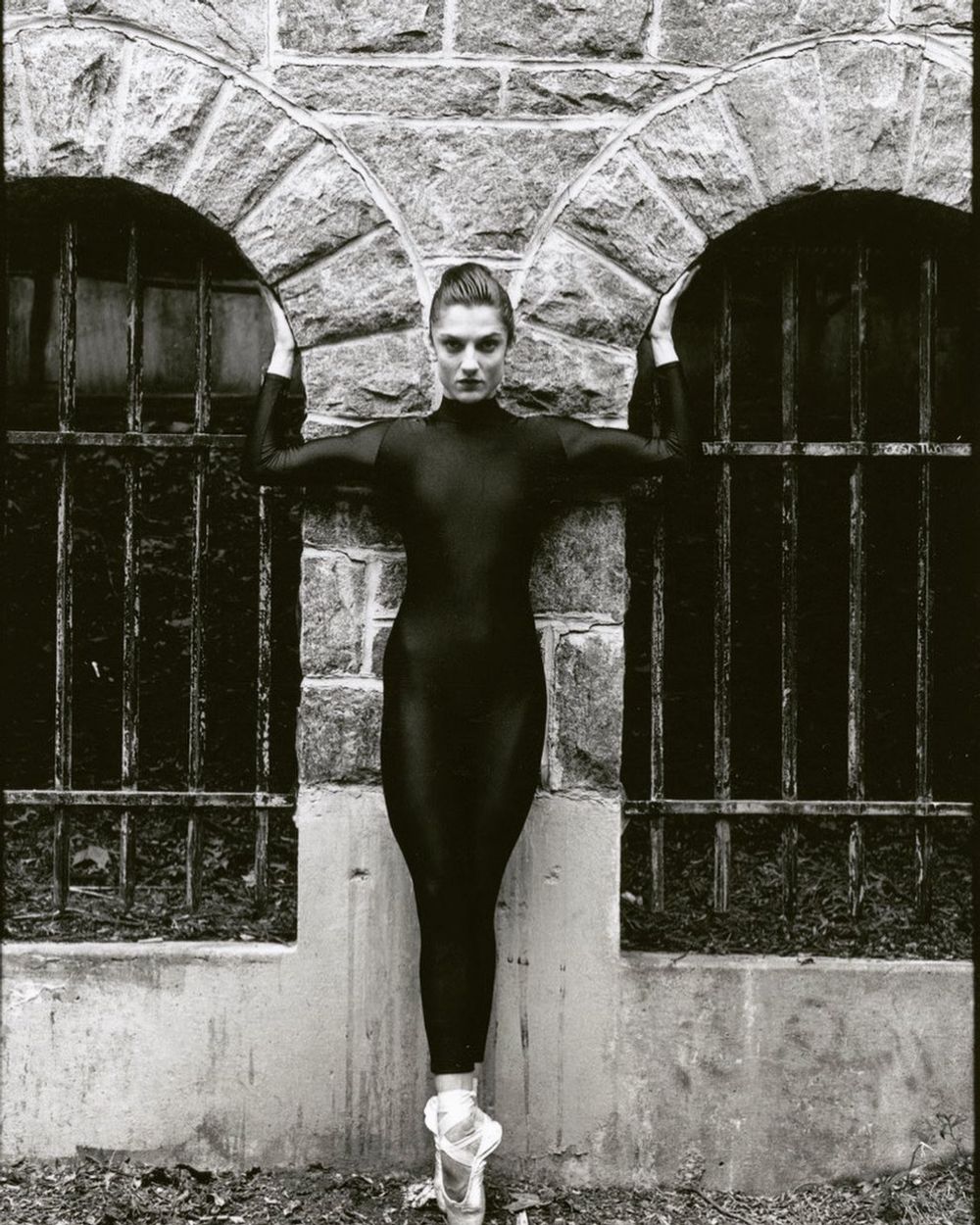
One from the archives: Bettina Bryant
They are clearly passionate about making biodynamically-farmed wines that precisely and honestly express their remarkable terroir, through an integrated approach, controlling everything in-house and focusing on the place.
“Why winemaking?” says Carothers, “I love working outside and I love fermentation.”
When the Napa fires smoked them out in 2020, she filled her time fermenting a lot of different things – making batches of cider, yoghurt and kombucha.
Having spent five years at Bryant as an intern working under the direction of then-consulting oenologist Michel Roland, Carothers moved to ADAMVS for more experience working with mountain fruit before returning to Bryant as winemaker in 2018, a year in which the winery went fully biodynamic, and one which followed a period of instability at the estate which saw five winemakers depart in just seven years. Lunch is not the occasion to delve into this and some of the other controversies that a cursory Google search uncovers, suffice to say that the subject matter is kept purely viticultural.
Carothers explains how the vineyards which were initially planted in 1986 were replanted in 1996 after phylloxera had struck but this time “with the right clones and rootstock”, how much of the steeper land is still tilled by hand and meticulous selection is carried out to only get the very best berries into the winery. To give an example of this selection process, an average yield for a 13-acre vineyard in Napa would be 300 barrels, Bryant achieves about 75 barrels.
The Cabernet Sauvignon fruit from Bryant Estate goes into the flagship wine, Bryant Family Vineyard; for Bettina (a wine first released in 2009, the year Donald and Bettina wed) a blend of Cabernet Sauvignon, Merlot, Cabernet Franc and Petit Verdot comes from David Abreau’s vineyards and a third wine DB4 consists of declssified wine from Bryant Family Vineyard and Bettina.
All of the wines start in the same place – being farmed identically – then a selection process determines the fruit to be used in each blend. In general there has been a move away from using new oak with concrete tanks and amphora replacing barrels, constructed as they are with volcanic and clay soils from the estate.

Bettina Bryant (l) and ‘KK’ Carothers in the cellar of The French Laundry.
When asked what the biggest change Carrothers has introduced since taking over winemaking duties, Bettina Bryant says that “the winery is cleaner”, which KK verifies saying that she tries to create as reductive an environment as possible.
“I’m not looking for something that isn’t there,” she says, “I’m going for length, for longevity, to coax out the tannins, but being delicate with extraction.”
The hallmark of the Bryant Family Estate style really is the tannins – dense, ripe, plush, powdery fine, creating structure and concentration without being too evident. The estate’s three wines are all fresh, aromatic and expressive with this bedrock of acidity and tannin – the classic fist in a velvet glove – bags of fruit with attractive herbal and savoury notes.
Although the 1997 Bryant Family Estate got 100 points from Parker, followed by 2006, 2016 and 2018, this team seems nonplussed about chasing the high scores
“From the 1960s to 1980s Napa was emulating Bordeaux. Now we’ve stopped trying to make Bordeaux,” says McClung, “Particularly between 1995 and 2005, that decade, the critics were dominating wine and had a huge influence on people making high octane wines, very powerful – they would make a wine for Robert Parker that was…‘mweh’.”
“But in the last ten to 20 years we’ve been making Napa Valley wines,” he says, “Because in Napa we do fruit – it’s the easiest thing – and as farmers we have to ask ourselves how do we go for acid and tannin and how do we go for balance?”

With biodynamic farming it’s not just what’s under the soil that’s important
Part of that question is answered by the estate coverting to full biodynamics in 2018, the other is in the freshness clearly apparent in the 2019 vintage; tasting older vintages side-by-side with the new wines, it is clear there is a degree of restraint being sought, a drive for even greater elegance – the Bettina 2019, in particular, benefitting from the addition of Cabernet Franc.
McClung confides that, following the success of the one-off 100% Cabernet Franc in 2016, he asked Carothers to make another vintage of it. Instead she let him taste Bettina with and without the addition of Cabernet Franc, and he conceded that it was better in their ‘second wine’.
Sales-wise up to 90% of Bryant Family Estate wines are sold direct to their customer base, the rest exported with the UK and Switzerland being the top markets.
So how were the wines tasting?
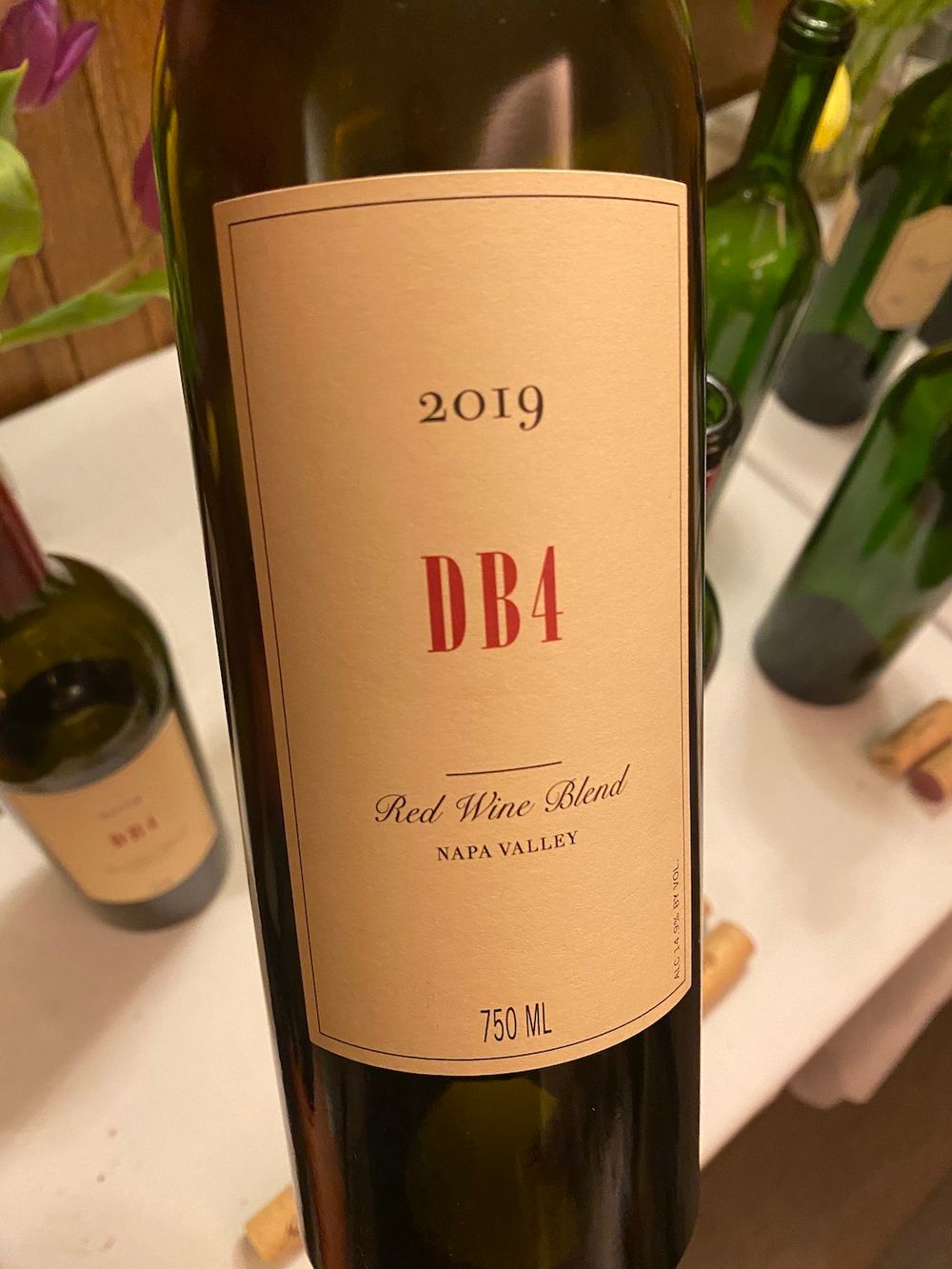
Bryant Family Vineyard DB4 2019
A Bordeaux blend compiled once final blends for Bettina and Bryant are completed. The 2019 comprises 85% Cabernet Sauvignon, 9% Petit Verdot, 3% Cabernet Franc, and 3% Merlot. The vineyards for the wine include the Bryant Family Vineyard, Madrona, and Las Posadas. The wine was bottled after spending 20 months in 60% new oak.
Hard to call this wine ‘entry level’ – although compared to the big guns it is relatively precocious – this is joyously ripe, balanced and complete at such an early stage. The aromatics offer ripe blackberry, cherry, blue fruit too with Bourbon biscuit. In the mouth it is medium to full bodied, lashings of fruit, ripe tannin and a blue fruit-skin restraint in the acidity which binds it all together. Some excellent broody and meaty notes appearing.
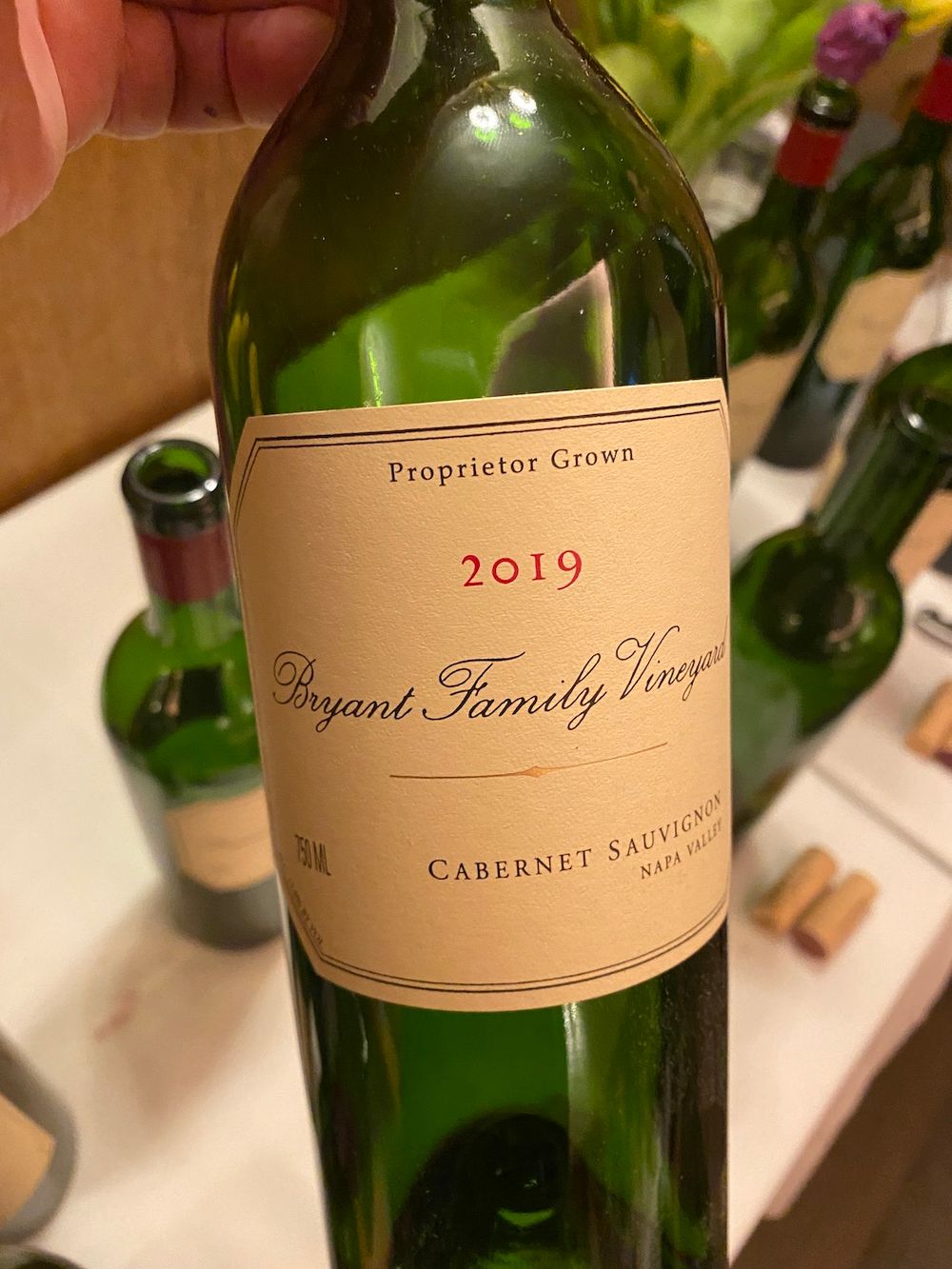
Bryant Family Vineyard Cabernet Sauvignon 2019
100% Cabernet Sauvignon from purely estate-grown fruit, this is dense purple-black at the core, opaque with deep purple edging. The nose is more restrained than the DB4 but opens out to offer ripe blackberry, blackcurrants, mocha with savoury notes of wild herbs and tobacco. In the mouth the wine is full-bodied, rich, ripe, concentrated with astonishing depth, the ripe powdery tannins lending a seductive mouthfeel. Drinking well now, although this is clearly for the long haul.
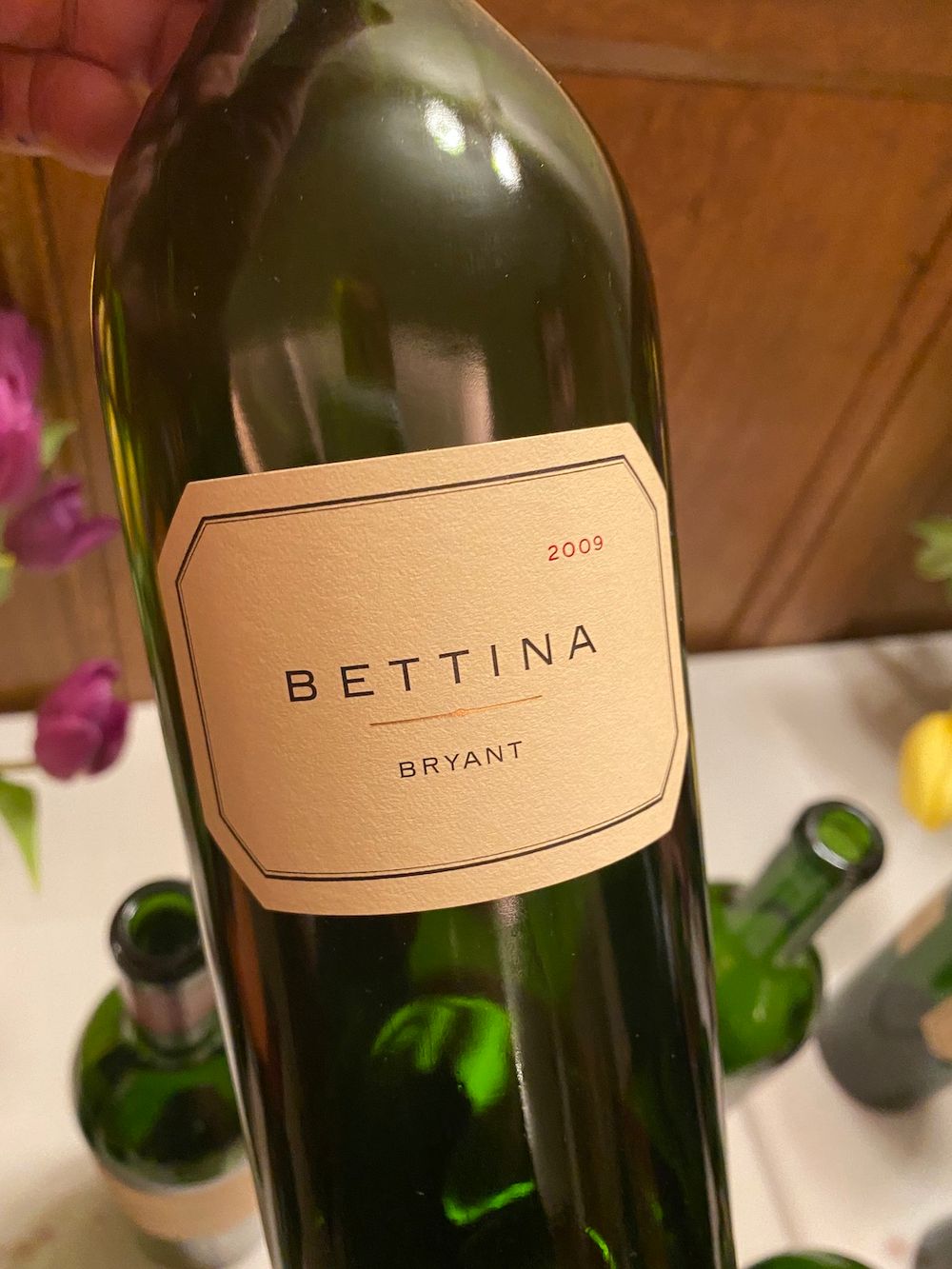
Bryant Family Vineyard Bettina 2019
This classy Bordeaux blend is made with fruit from David Abreu’s Madrona, Thorevilos and Las Posadas vineyards and was my 2019 wine of the tasting – at this stage it had a ‘completeness’ mixed with a lovely freshness at the core. There’s more texture than the previous wine, lovely ripe, densely-layered tannins, the medium to full-bodied mouthfeel awash with fresh black fruits, currants, espresso and tapenade. Rich, ripe, well-balanced with the Cab Franc particularly apparent on the nose with a stalky/ pepper note. Quite delicious.
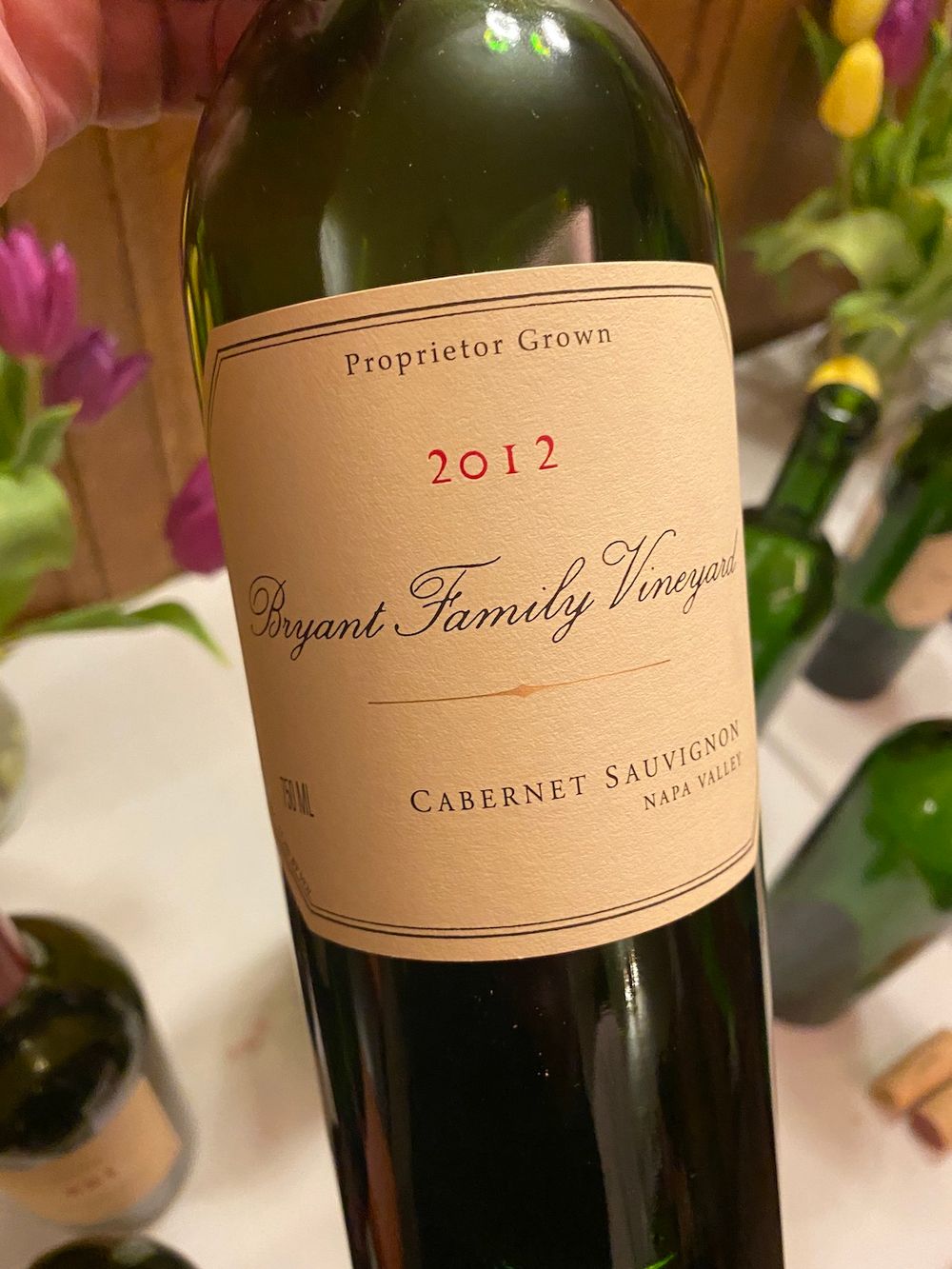
Bryant Family Vineyard Cabernet Sauvignon 2012
Youthful, medium bodied; the aromas are a gorgeous and inviting mix of blue and black fruit that moves to savoury and then herbal – I found mulberry, graphite, sage and tobacco – in the mouth the wine has real poise with the slightly-drying woody tannins holding the powerful and concentrated fruit and 15.2% alcohol in balance. In a great place now although it could age for decades more – I liked the slightly sappy edge, liquorice and tobacco elements that point to a core that’s just getting broodier. Classic Napa Cab.
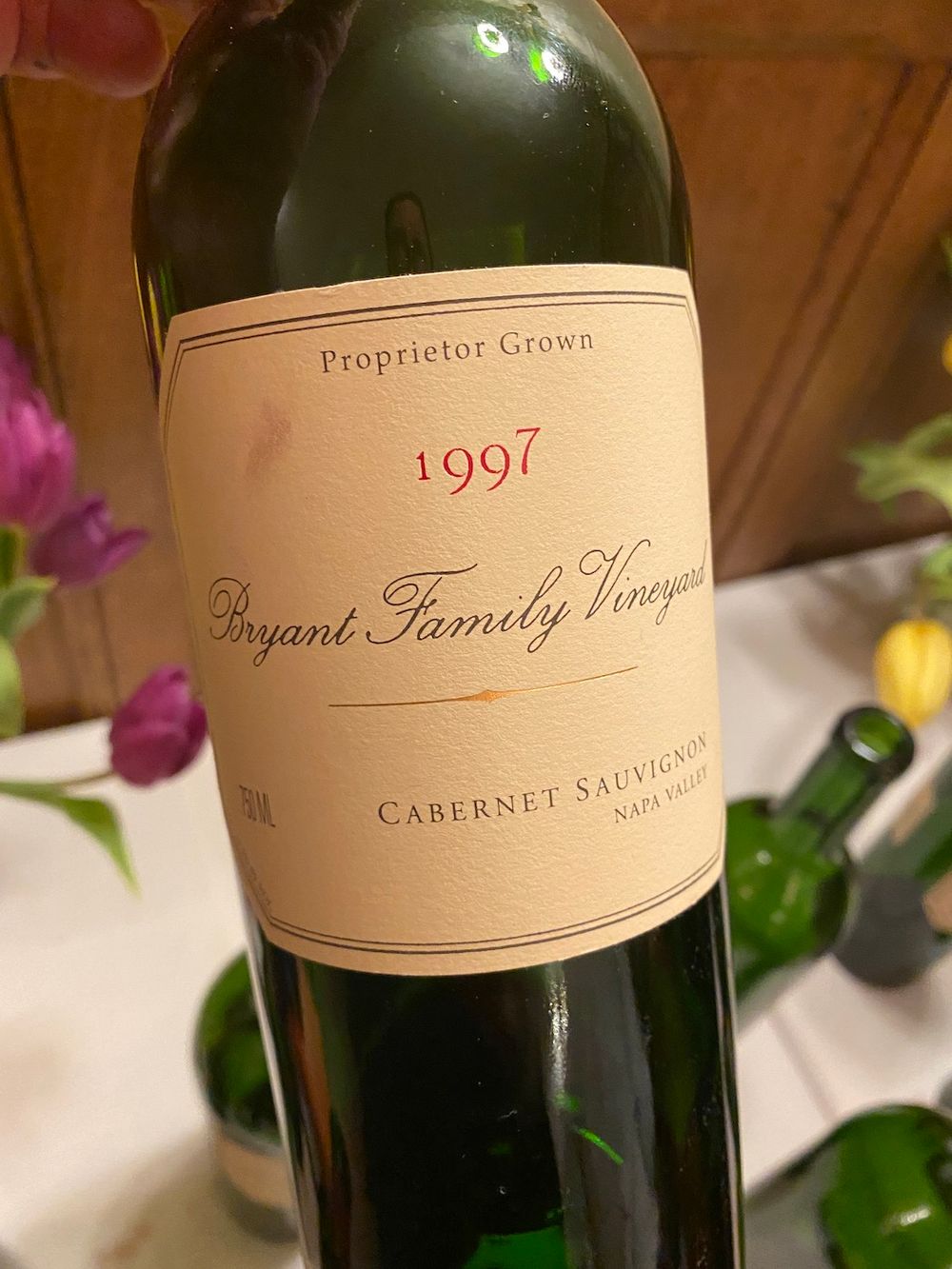
Bryant Family Vineyard Cabernet Sauvignon 1997
First 100-Parker point wine for this boutique, super-premium Napa estate, and it’s still in good shape – arguably at the peak of its drinking window with still some years left on the clock. Deep, dark purple with blood red edging; the aromatics are powerful, complex and heavenly with burnt black fruit, scorched earth, tapenade, meat; in the mouth the wine is polished, full-bodied, unctuous and mouth-filling, the tannins completely resolved – ripe black fruit, cassis, raisins – with a Port-like sweetness, finished nicely with a citrus tightness. It’s clearly a Parker wine but you don’t feel the near-16% abv in the balance of the wine, which is still in shape, more so in the hedonistic glow that follows a large glass or two. Quintessential old school Napa Cab.
Bryant Family Vineyard Bettina 2009
We rounded off the lunch with the inaugural vintage of this blend of Bordeaux grapes – 55.6% Cabernet Sauvignon, 23.8% Cabernet Franc, 16.9% Merlot, and 3.7% Petit Verdot from David Abreu’s Madrona Ranch, Thorevilos, and Las Posadas sites. Full-bodied and complex with aromas of black cherry, cardamon, crushed rocks; the wine is full-bodied in the mouth with plum tart, espresso, leather, and the Cab Franc making its presence felt with an attractive stalky, capsicum note. Bang in the middle of its drinking window and in a great place. Poured without decanting.
The release prices for the new wines are: DB4 2019, 75cl: £175; Bryant Family Vineyard 2019, 75cl: £575; Bettina 2019, 75cl: £345 (release Spring 2023)
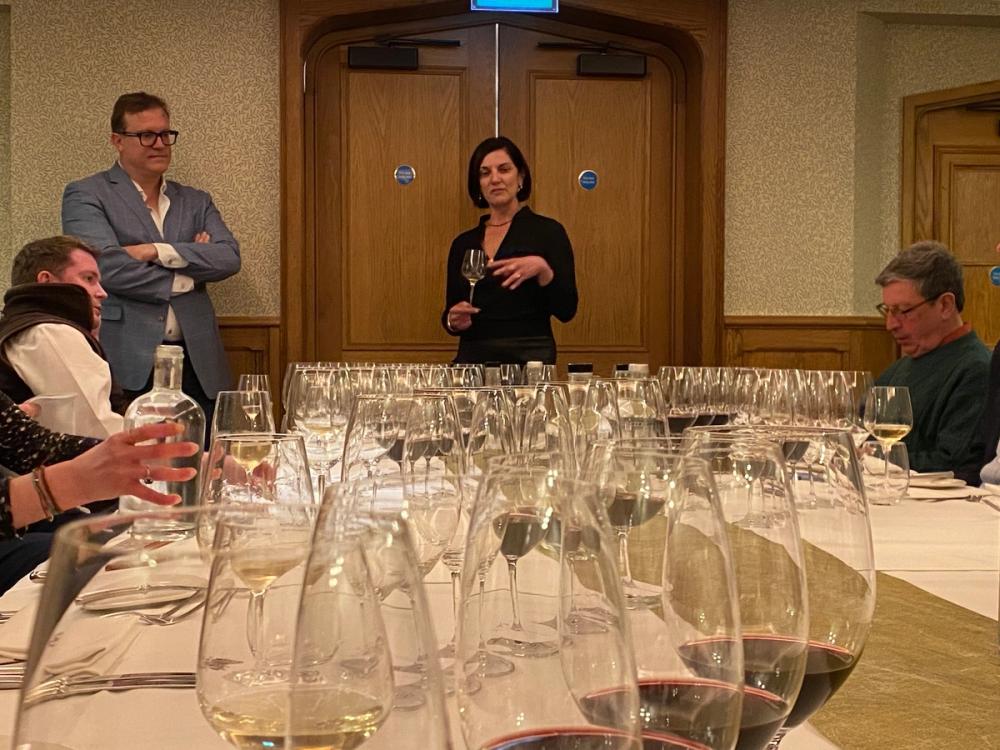
Tony McClung (standing) and Bryant showing the wines at Saint Jacques
The Bryant Estate wines are imported and sold in the UK through Pol Roger Portfolio which is a supplier partner of The Buyer. To discover more about them click here.
